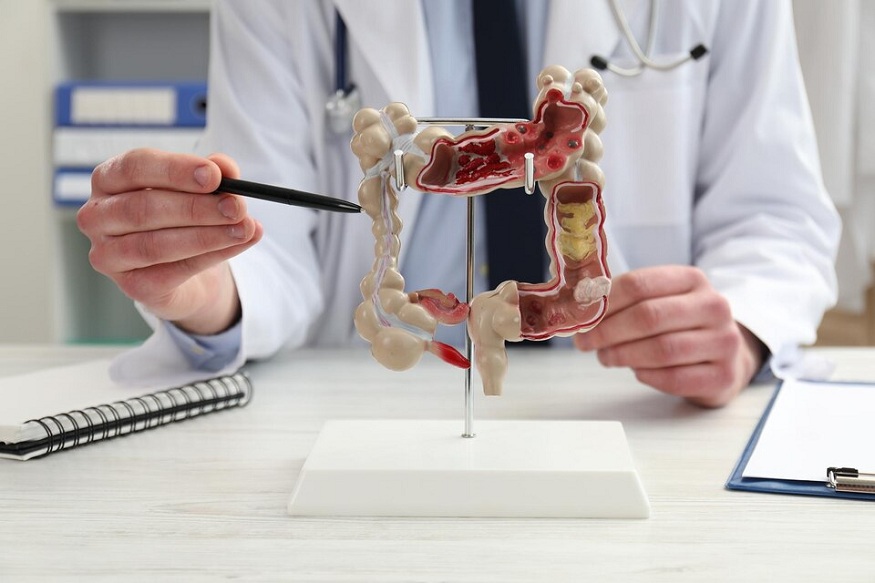A hernia, derived from the Latin word meaning “rupture,” is a common medical condition where an organ or fatty tissue squeezes through a weak spot in a surrounding muscle or connective tissue (fascia). While often not immediately life-threatening, hernias can cause discomfort, pain, and, if left untreated, lead to serious complications. Understanding what a hernia is and the available treatment options is crucial for anyone experiencing symptoms.
What Exactly is a Hernia?
Imagine your abdominal wall as a strong, protective layer. If a weak point develops in this wall, internal contents – typically a part of the intestine or fatty tissue – can push through, creating a bulge. This bulge is the most common sign of a hernia. While they can occur in various parts of the body, the most common types are found in the abdomen and groin:
- Inguinal Hernia: The most common type, occurring when part of the intestine pushes through a weak spot in the abdominal wall, often into the groin area or down into the scrotum in men.
- Femoral Hernia: Less common, these occur when tissue pushes through a weak spot in the abdominal wall into the upper thigh, near the groin. More prevalent in women.
- Umbilical Hernia: Occurs around the navel (belly button) when part of the intestine pushes through the abdominal wall. Common in infants, often resolving on their own, but can also affect adults.
- Incisional Hernia: Develops at the site of a previous surgical incision, where the scar tissue has weakened, allowing tissue to protrude.
- Hiatal Hernia: This type occurs when part of the stomach pushes up through the diaphragm (the muscle separating the chest and abdomen) into the chest cavity. This is different from other hernias as it doesn’t always present as an external bulge.
What Causes a Hernia?
Hernias can be present from birth (congenital) or develop later in life (acquired). They are often caused by a combination of muscle weakness and strain. Factors that can contribute to hernia development include:
- Increased pressure within the abdomen (e.g., heavy lifting, chronic coughing, straining during bowel movements, pregnancy, obesity).
- Ageing, which can lead to weakening of muscles.
- Previous surgery in the area.
- Genetic predisposition.
Symptoms of a Hernia
The most common symptom is a visible bulge or lump, particularly when standing, coughing, or straining. This bulge may disappear when lying down. Other symptoms can include:
- Pain or discomfort in the affected area, especially with activity.
- Aching or burning sensation.
- A feeling of heaviness or pressure.
- In some cases, no symptoms are present at all.
When a Hernia Becomes Serious: Incarceration and Strangulation
While many hernias are initially painless, they can become serious if the protruding tissue gets trapped (incarcerated) and cannot be pushed back in. This can lead to increased pain, tenderness, and nausea. A more severe complication is strangulation, where the blood supply to the trapped tissue is cut off. This is a medical emergency requiring immediate surgery, as it can lead to tissue death and serious infection. Symptoms of a strangulated hernia include sudden, severe pain, nausea, vomiting, fever, and a red or purple discolouration of the bulge.
Hernia Treatment Options
The primary treatment for most types of hernias is surgery. While some very small, asymptomatic hernias might be monitored, surgical repair is generally recommended to prevent complications.
Watchful Waiting (Conservative Management):
- For very small, asymptomatic hernias, particularly in older individuals with other health conditions, a “watch and wait” approach might be considered. This involves careful monitoring by a doctor.
- For umbilical hernias in infants, watchful waiting is often the first approach as many resolve spontaneously by the age of 4 or 5.
- Important Note: Watchful waiting is not suitable for all hernias and is never recommended if the hernia is causing pain, growing, or shows signs of incarceration or strangulation.
- Surgical Repair (Hernioplasty/Herniorrhaphy): This is the definitive treatment for most symptomatic hernias. The goal of surgery is to push the protruding tissue back into place and repair the weakened muscle wall. There are two main surgical approaches:
- Open Hernia Repair:
- Procedure: The surgeon makes a single incision near the hernia site. The protruding tissue is gently pushed back into the abdomen. The weakened muscle wall is then either stitched together (herniorrhaphy) or, more commonly, reinforced with a synthetic mesh patch (hernioplasty) to strengthen the area and reduce the risk of recurrence.
- Anaesthesia: Usually performed under general anaesthetic, but sometimes local anaesthetic with sedation can be used.
- Recovery: Typically involves a few days of discomfort and limited activity, with a full recovery taking several weeks.
- Laparoscopic (Keyhole) Hernia Repair:
- Procedure: This minimally invasive technique involves making several small incisions. A thin tube with a camera (laparoscope) is inserted, allowing the surgeon to view the hernia on a screen. Special surgical instruments are then used to push the tissue back and place a mesh patch from the inside of the abdominal wall.
- Anaesthesia: Always performed under general anaesthetic.
- Recovery: Generally results in less pain, smaller scars, and a quicker recovery time compared to open surgery.
- Suitability: Not suitable for all types of hernias or all patients; your surgeon will advise if this is an option for you. It is often preferred for recurrent hernias or bilateral (both sides) inguinal hernias.
Choosing the Right Treatment
The best treatment option for your hernia will depend on several factors, including:
- The type and size of the hernia.
- Your symptoms and overall health.
- Your age and activity level.
- The surgeon’s experience and preference.
Your GP will assess your condition and refer you to a general surgeon who specialises in hernia repair. The surgeon will discuss the pros and cons of each surgical technique, including potential risks (such as infection, bleeding, nerve damage, or recurrence) and expected recovery times, to help you make an informed decision.
In conclusion, while a hernia can be a nuisance, effective hernia treatments are available. Prompt medical attention and discussion with a healthcare professional, such as colorectal surgeon Mr Andrew Clarke, are key to managing your condition and ensuring a return to comfortable, active living.

